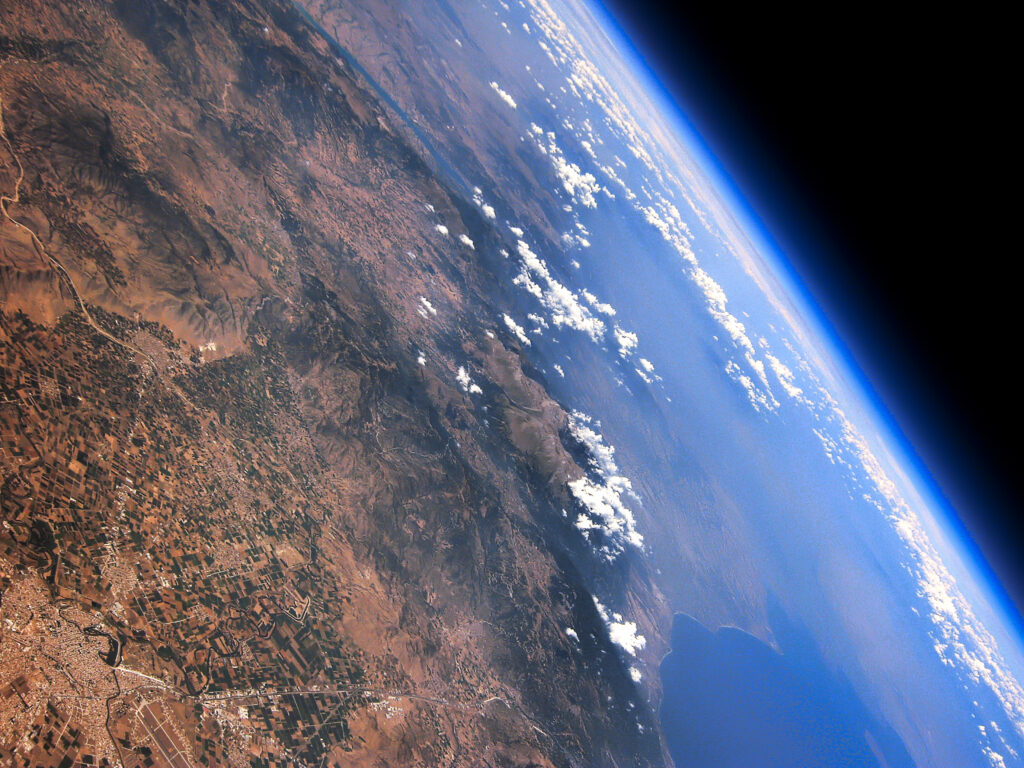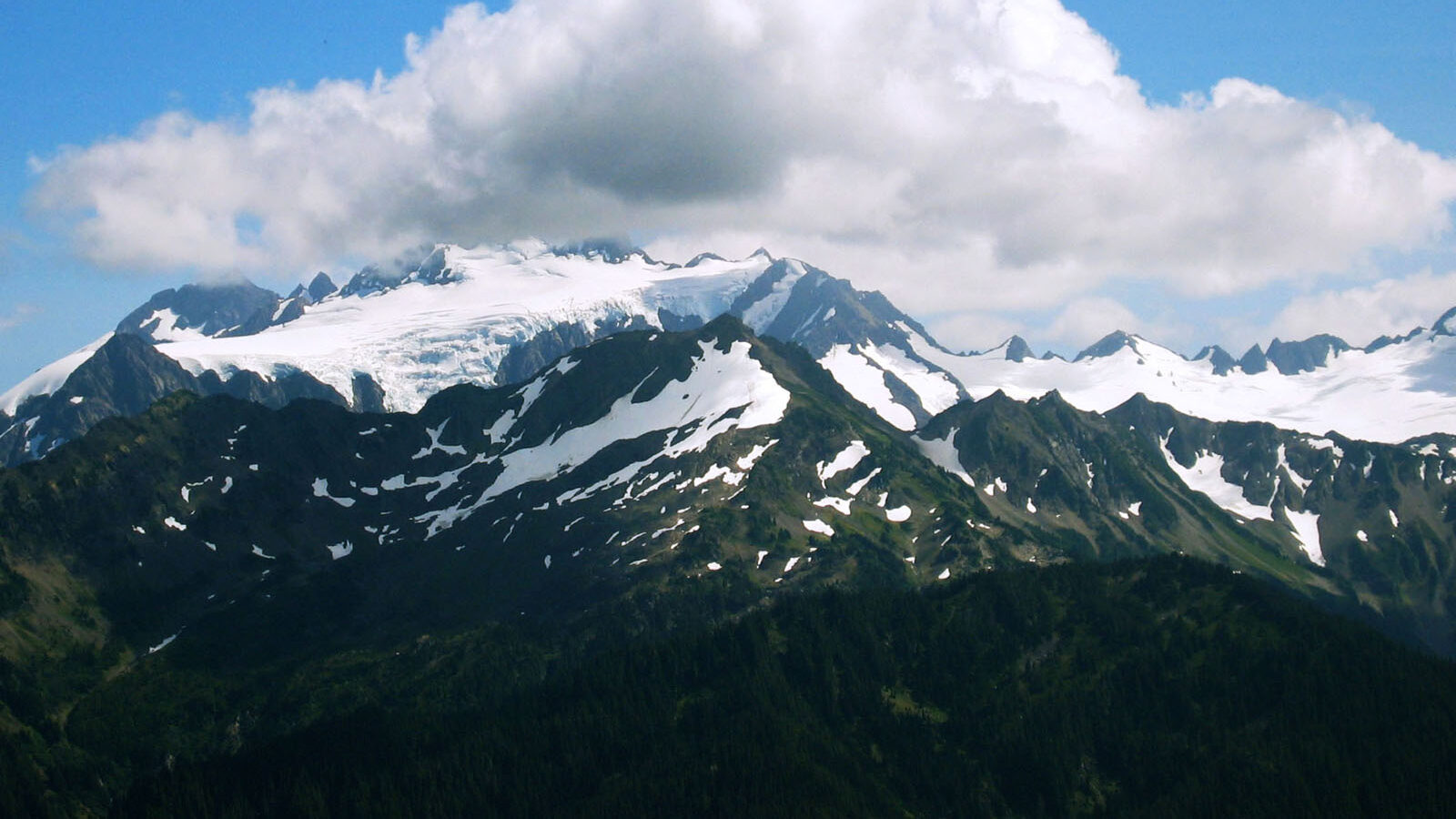
Introduction
Mount Olympus, the highest mountain in Greece, stands at 2,917 meters (9,573 feet) and is not only a natural wonder but also a profound cultural symbol steeped in mythology and history. Known as the home of the Greek gods, it has captivated the imagination of countless generations. In Greek mythology, Mount Olympus is revered as the dwelling place of the Twelve Olympian gods, including Zeus, Hera, Poseidon, and Athena. This majestic mountain symbolizes divine authority and power, influencing various aspects of life in ancient Greece.
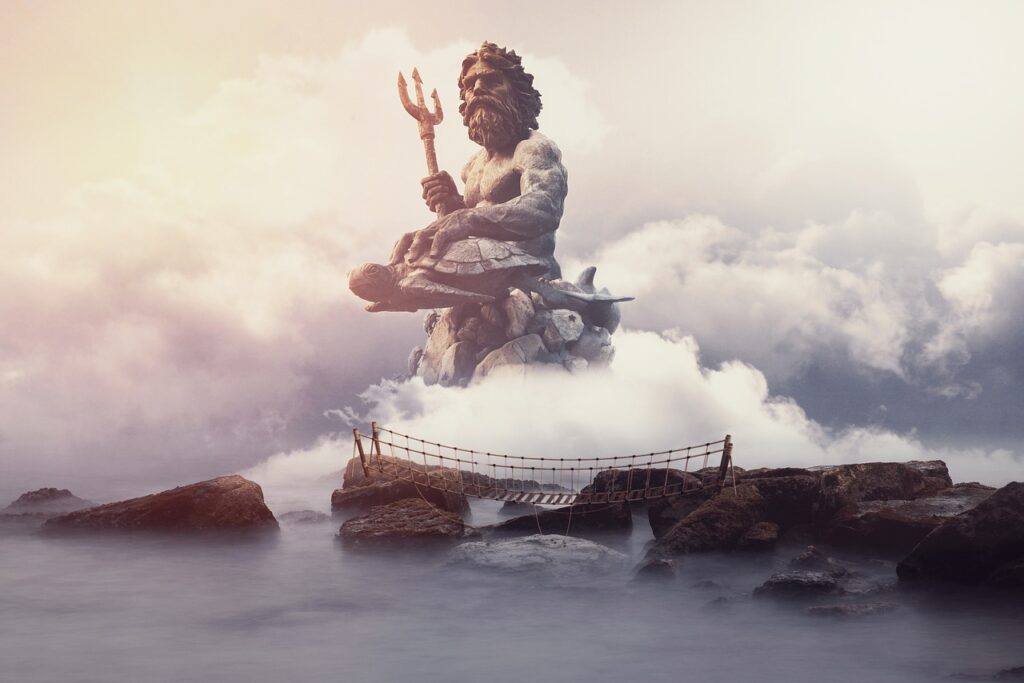
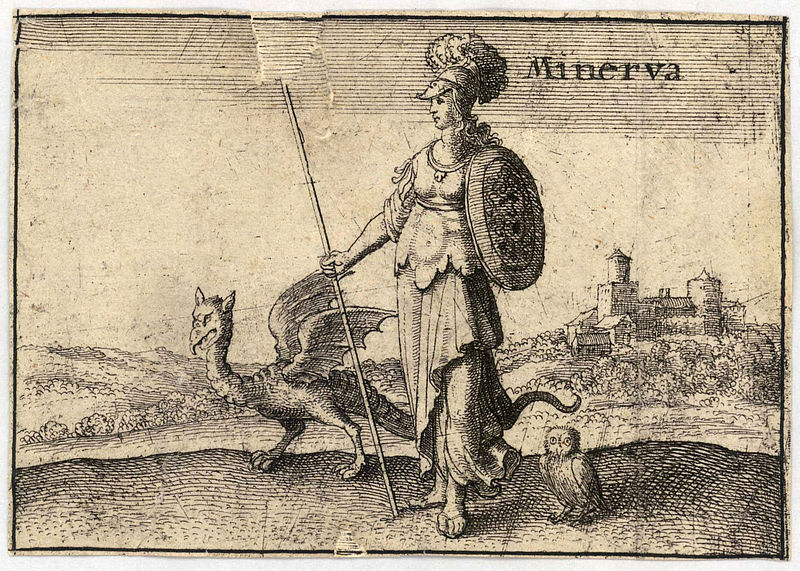

For the people of Greece, Mount Olympus has always been more than just a mountain. It represents a connection to their rich cultural heritage and the myths that have shaped their identity. The mountain’s peaks were believed to be the palaces of the gods, and many ancient myths and legends are associated with this sacred place.
Mount Olympus is also a popular hiking destination, attracting adventurers from around the world. Its allure lies not only in its mythological significance but also in its challenging terrain and breathtaking views. The mountain offers a variety of routes, each providing a unique experience for hikers. Every year, about 10,000 people attempt to climb Mount Olympus, with most reaching the Skolio summit. The combination of its historical importance, natural beauty, and the thrill of the climb makes Mount Olympus a must-visit for any hiking enthusiast.
Routes to the Summit

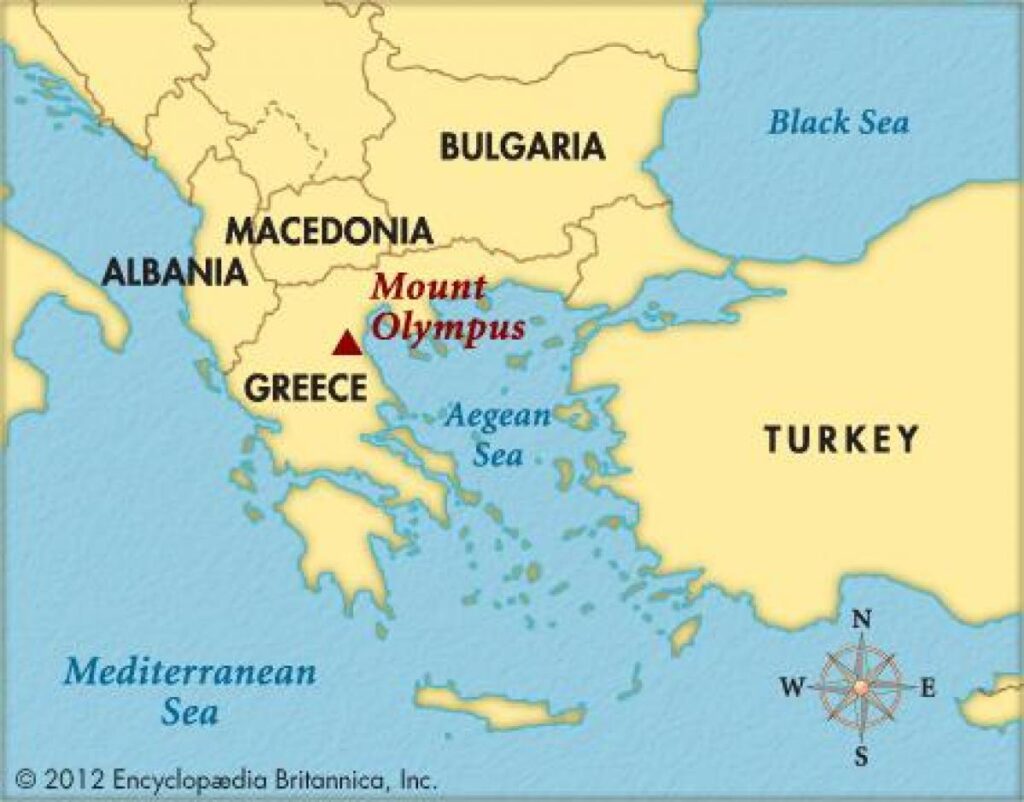
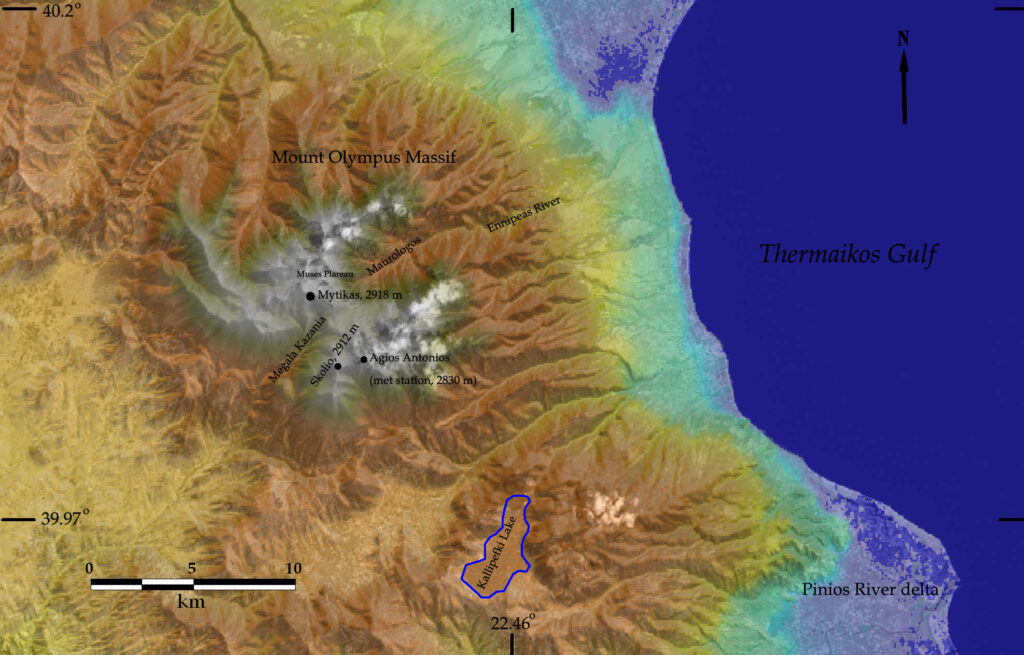
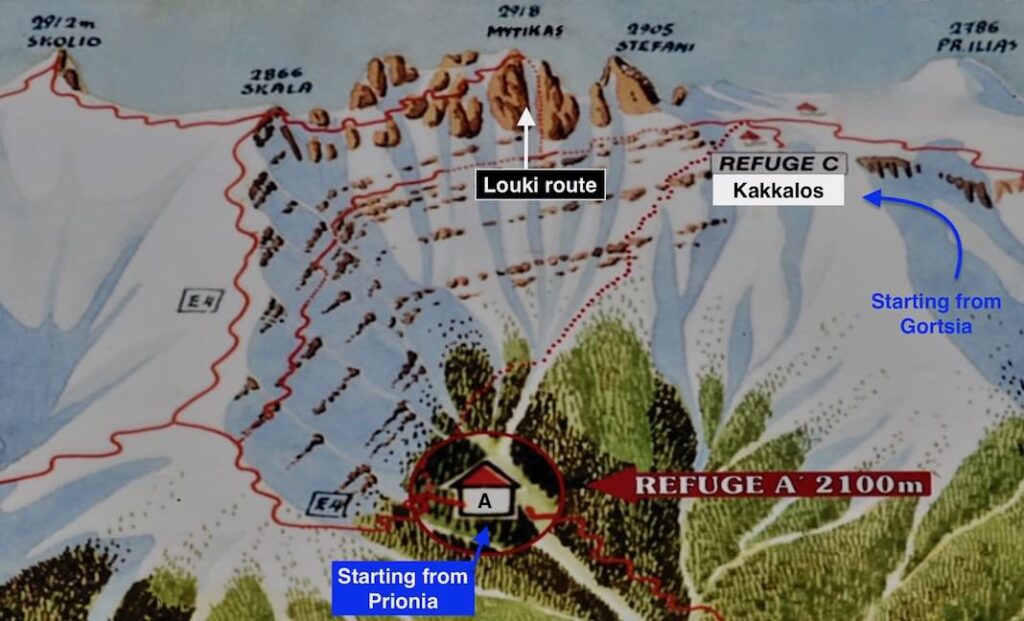

Mount Olympus boasts 52 peaks, with the three primary ones being Mytikas (the highest peak), Skolio, and Stefani. Reaching the summit of Mytikas, at 2,917 meters, is particularly challenging due to its Class 3 difficulty, which involves a demanding rock scramble with loose rocks on steep slopes. This section requires careful climbing and a good head for heights, making it suitable mainly for those with mountaineering experience or those accompanied by a certified guide.
Setting Expectations

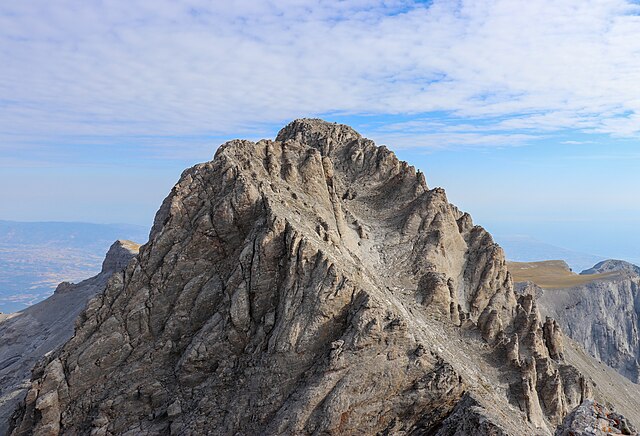
While reaching Mytikas is a rewarding experience, it is important to set realistic expectations. The final ascent to Mytikas involves a Grade III scramble (check out this guide on scrambling), which is not recommended for hikers without a rock climbing and mountaineering background. This part will include a degree of climbing, and it is not provided with a via ferrata (check out our guides to via ferratas). Even with a guide, this part of the climb can be daunting and requires a high level of physical fitness and mental preparedness. For those who are not comfortable with such technical climbs, the second-highest peak, Skolio, at 2,911 meters, offers a more accessible yet still challenging alternative. The height difference between Mytikas and Skolio is minimal, but Skolio can be reached without the need for technical climbing skills, making it a safer option for many hikers.
Ascending from Litochoro Village
Litochoro Village, known as the “City of the Gods,” is the traditional starting point for climbing Mount Olympus. Here’s how to proceed from Litochoro:
- Arrival in Litochoro: Litochoro is easily accessible by car or public transport from Thessaloniki. The village offers various amenities, including accommodations, restaurants, and shops where you can stock up on supplies.
- Starting the Hike: From Litochoro, you can choose to hike directly to Prionia instead of driving. The hike from Litochoro to Prionia follows the E4 trail and is approximately 11.7 km (7.3 miles) long with an elevation gain of 1,119 meters. This hike takes about 5 hours and passes through the beautiful Enipeas Canyon, featuring wooden bridges, waterfalls, and the Agios Dionysios Monastery.
- Prionia to Spilios Agapitos Refuge: Once you reach Prionia, continue your hike to the Spilios Agapitos refuge (Refuge A). This section is about 6 km (3.7 miles) and takes approximately 3-4 hours. The trail is well-marked and passes through forested areas.
- Spilios Agapitos Refuge to Skala: After an overnight stay at the refuge, continue your ascent to Skala, which is at 2,882 meters. This section is about 6 km (3.7 miles) and takes around 3-4 hours. The trail becomes steeper and more rugged as you gain altitude.
- Skala to Mytikas: From Skala, the final push to Mytikas involves a challenging scramble. This section is only about 0.5 km (0.3 miles) but can take 1-2 hours due to the technical difficulty. This part of the climb requires careful navigation and is best attempted with a guide if you are not experienced in rock climbing.
- Alternative Route to Skolio: If you prefer a less technical climb, you can opt to summit Skolio instead. From Skala, the trail to Skolio is less demanding and can be completed in about 30 minutes.
Prionia Route

- Distance: 19.2 km (12 miles) round trip
- Elevation Gain: 1,928 meters
- Duration: 11-13 hours
- Difficulty: Moderate to difficult
- Description: Starting from Prionia, this route takes you through lush forests and rocky terrain. The trail is well-marked and offers stunning views of the surrounding landscape. It is the most popular route due to its accessibility and scenic beauty. This route can be completed in one long day or split into two days with an overnight stay at the Spilios Agapitos hut.
Who Should Use This Route? The Prionia route is ideal for hikers who prefer a well-marked and relatively straightforward path. It is suitable for those who want to experience the beauty of Mount Olympus without the need for advanced navigation skills. This route is popular among first-time climbers of Mount Olympus and those looking for a more scenic and less strenuous ascent.
Gortsia Route
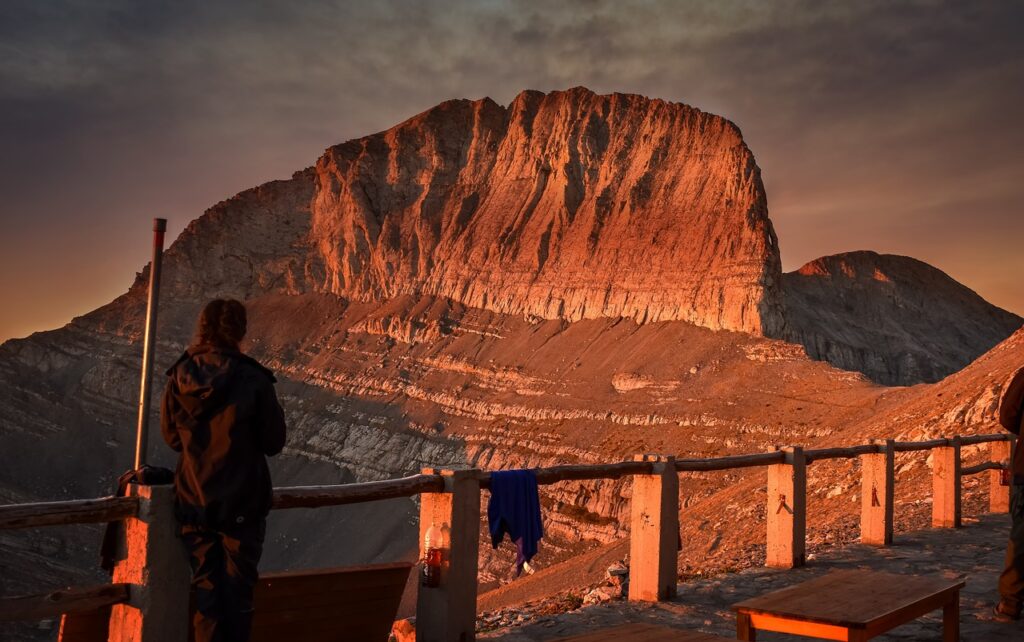
- Distance: 20 km (12.4 miles) round trip
- Elevation Gain: 2,200 meters
- Duration: 12-14 hours
- Difficulty: Difficult
- Description: This route is longer and more challenging, suitable for experienced hikers. It offers a more secluded experience with fewer hikers on the trail. The path is rugged and requires good navigation skills. This route includes a stay at the Christos Kakalos hut and offers magnificent views over the mountain and the Aegean Sea.
Who Should Use This Route? The Gortsia route is best suited for experienced hikers who are looking for a more challenging and less crowded path. It is ideal for those who enjoy rugged terrain and have good navigation skills. This route is also preferred by hikers who want to experience the Muses Plateau and stay at the Christos Kakalos hut.
The Three Peak Challenge
For those seeking an even greater adventure, the Three Peak Challenge involves summiting Mytikas, Skolio, and Stefani in a single day. This challenge is typically undertaken by very experienced climbers and requires excellent physical fitness, technical climbing skills, and careful planning.
Accommodation
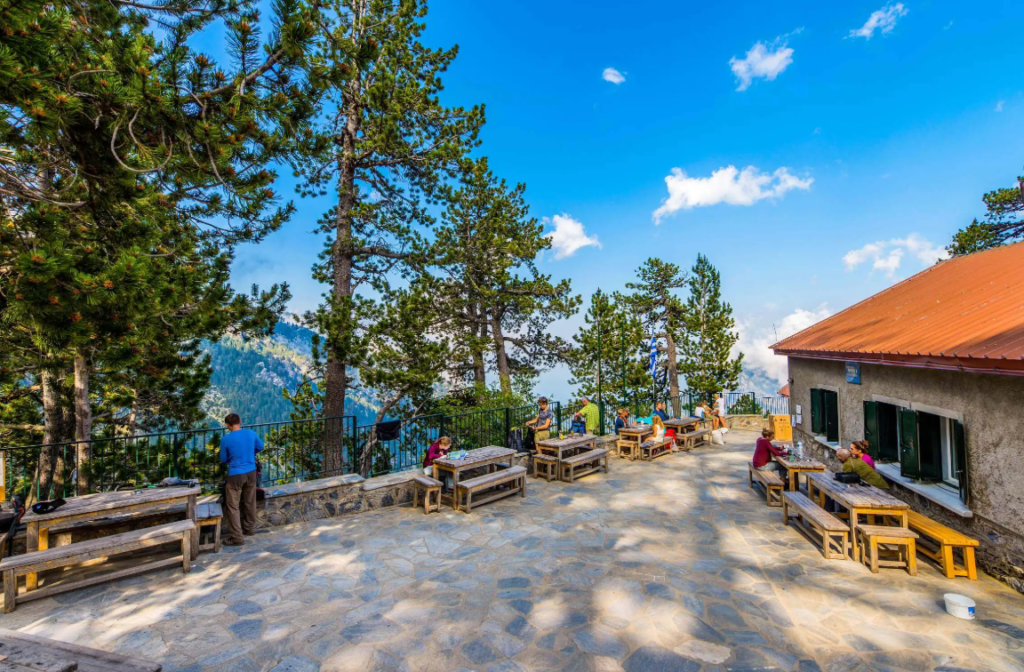

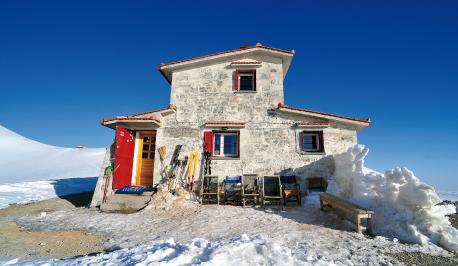

- Refuge A (Spilios Agapitos): Located at an altitude of 2,100 meters, this refuge is a popular stop for climbers setting out on the Prionia route. It offers basic amenities such as beds, food, and water. Bed sheets and blankets are provided, but it is recommended to bring a sleeping bag liner for added comfort. The cost of staying at Refuge A is approximately €15 per night. You can pre-book your stay here.
- Refuge C (Christos Kakalos): Situated at 2,650 meters, this refuge is closer to the summit but suitable for the Gortsia route. It offers dormitory-style sleeping quarters with basic amenities. Bed sheets and blankets are provided, but bringing a sleeping bag liner is advisable. The cost of staying at Christos Kakalos Refuge is around €13 per night. You can pre-book your stay here.
Camping on Mount Olympus is allowed, but there are specific regulations and designated areas where you can set up your tent. Here are some key points to consider:
- Designated Camping Areas: Camping is permitted in designated areas such as the Muses Plateau and near the refuges. It is important to camp only in these areas to minimize environmental impact and ensure safety.
- Permits: While there is no specific permit required for camping, it is advisable to inform the local authorities or the refuge staff about your camping plans.
- Facilities: The designated camping areas near the refuges do not have extensive facilities, so you need to be self-sufficient. Bring your own tent, sleeping bag, and cooking equipment.
- Weather: Be prepared for rapidly changing weather conditions. Even in summer, temperatures can drop significantly at night, and sudden storms can occur.
- Leave No Trace: Follow the Leave No Trace principles to protect the natural environment. Pack out all your trash, avoid disturbing wildlife, and minimize your impact on the landscape.
Essential Equipment for Climbing Mount Olympus
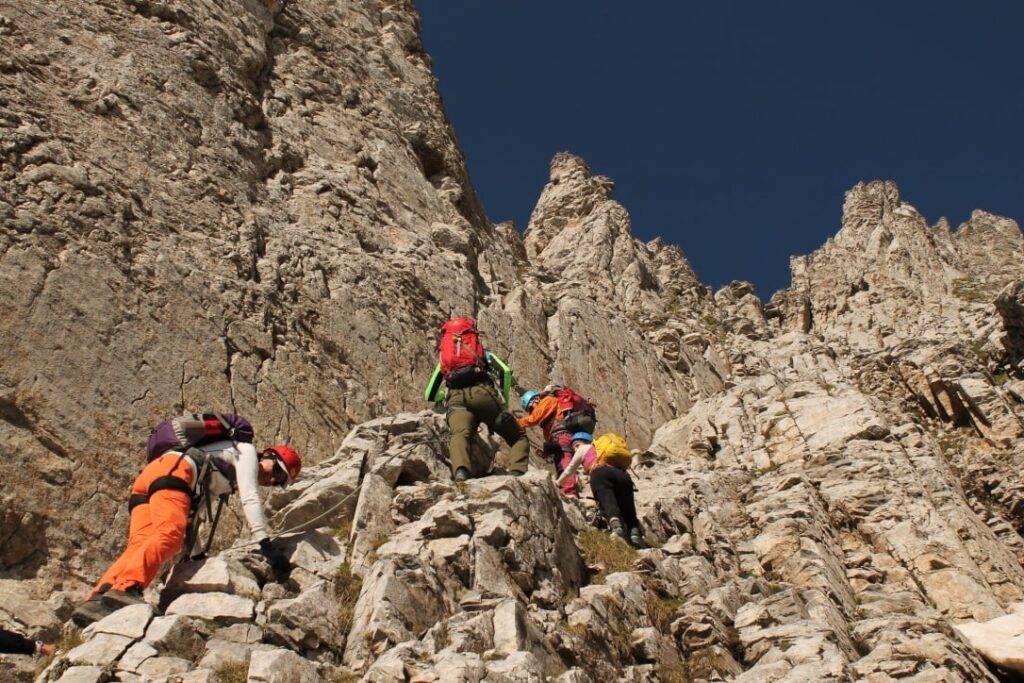
Footwear
- Sturdy Hiking Boots: Ensure they have good ankle support and are well broken in to avoid blisters (check out our guide on hiking shoes), such as the ones in one of our previous reviews.
Clothing
- Layered Clothing: To adapt to changing weather conditions. Include moisture-wicking base layers, insulating mid-layers, and a waterproof outer layer.
- Hat and Gloves: For warmth at higher altitudes.
- Sun Protection: Sunglasses, a wide-brimmed hat, and sunscreen.
Navigation
- Map and Compass: Essential for navigation, especially if you lose the trail.
- GPS Device: Useful for tracking your route and location.
Safety Gear
- Helmet: For protection during the scramble to Mytikas.
- Harness and Ropes: Necessary for the more technical sections if you plan to climb Mytikas.
- First Aid Kit: Include bandages, antiseptic wipes, pain relievers, and any personal medications.
- Headlamp: With extra batteries, for early starts or late finishes.
Food and Water
- High-Energy Snacks: Such as nuts, dried fruit, energy bars, and chocolate.
- Meals: Lightweight, high-calorie meals like dehydrated camping food.
- Water: Carry at least 2-3 liters of water per person per day. Refill at Prionia, Enipeas Canyon, and the refuges. Use a water filter or purification tablets for streams.
Other Essentials
- Backpack: A comfortable, well-fitting backpack to carry all your gear.
- Sleeping Bag Liner: For added comfort and hygiene in the refuges.
- Trekking Poles: Helpful for stability and reducing strain on your knees.
Water Availability on Mount Olympus

Water is available at several points on Mount Olympus, but it’s important to plan ahead:
- Prionia: This is a common starting point for many hikers, and you can refill your water bottles here before starting your ascent.
- Enipeas Canyon: If you are hiking from Litochoro to Prionia, you will pass through Enipeas Canyon, where there are several streams and waterfalls. These are good spots to refill your water bottles.
- Refuges: Both Refuge A (Spilios Agapitos) and Refuge C (Christos Kakalos) have water available for hikers. You can refill your bottles at these refuges.
- Streams Along the Trails: There are a few streams along the trails, especially in the lower sections. However, the availability of water in streams can vary depending on the season, so it’s advisable to carry a water filter or purification tablets to ensure the water from natural sources is safe to drink.
Getting to Mount Olympus from Athens
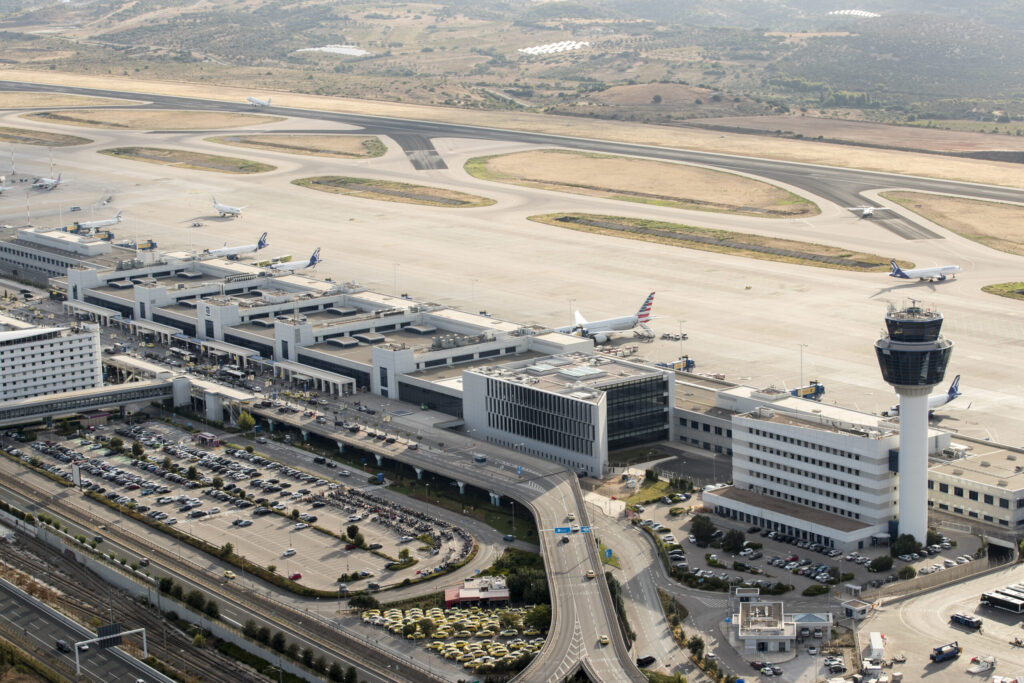

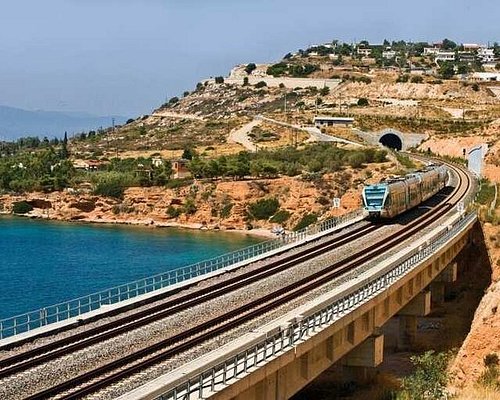
When planning your trip to Mount Olympus, it’s important to consider that traveling to Athens from an international airport may not be as quick as flying directly to Thessaloniki. While Athens is a major hub with numerous international flights, the additional travel time from Athens to Litochoro can be significant. In contrast, Thessaloniki is closer to Mount Olympus and offers more direct routes to Litochoro, potentially saving you time and making your journey more efficient.
By Train
Taking the train is one of the most convenient ways to travel from Athens to Litochoro.
- Route: Athens to Litochoro via Thessaloniki
- Distance: Approximately 422 km (262 miles)
- Estimated Time: Around 4 hours and 25 minutes
- Cost: €45 – €75
Steps:
- Athens to Thessaloniki: Take a train from Athens Railway Station (Larissa Station) to Thessaloniki. The journey takes about 4 hours.
- Thessaloniki to Litochoro: From Thessaloniki, take a regional train to Litochoro. This leg of the journey takes about 1 hour.
Booking: You can book your train tickets through the TrainOSE website.
By Bus
Traveling by bus is another option, though it takes longer than the train.
- Route: Athens to Litochoro via Katerini
- Distance: Approximately 416 km (258 miles)
- Estimated Time: Around 6 hours and 35 minutes
- Cost: €37
Steps:
- Athens to Katerini: Take a bus from Athens KTEL Liosion Bus Station to Katerini. The journey takes about 5 hours.
- Katerini to Litochoro: From Katerini, take a local bus or taxi to Litochoro, which takes about 30 minutes.
Booking: You can book your bus tickets through the KTEL Pierias website.
By Car
Driving from Athens to Litochoro offers flexibility and the opportunity to enjoy the scenic route.
- Route: Athens to Litochoro via the A1/E75 highway
- Distance: Approximately 416 km (258 miles)
- Estimated Time: Around 4 hours and 14 minutes
- Cost: €80 – €120 (including fuel and tolls)
Steps:
- Athens to Litochoro: Drive north from Athens on the A1/E75 highway towards Thessaloniki. Take the exit for Litochoro and follow the signs to the village.
Booking: If you need to rent a car, you can book through Rentalcars.com (https://www.rentalcars.com/).
Google Maps Route: Athens to Litochoro by Car.
By Plane
Flying is the fastest way to travel, but it involves additional transfers.
- Route: Athens to Thessaloniki by plane, then bus to Litochoro
- Distance: Approximately 422 km (262 miles)
- Estimated Time: Around 6 hours and 27 minutes (including transfers)
- Cost: €66 – €151
Steps:
- Athens to Thessaloniki: Fly from Athens Eleftherios Venizelos International Airport (ATH) to Thessaloniki Macedonia International Airport (SKG). The flight takes about 1 hour.
- Thessaloniki to Litochoro: From Thessaloniki, take a bus to Katerini, then a local bus or taxi to Litochoro.
Summary
- Train: 4h 25m, €45 – €75
- Bus: 6h 35m, €37
- Car: 4h 14m
- Plane: 6h 27m, €66 – €151
Best Time to Climb
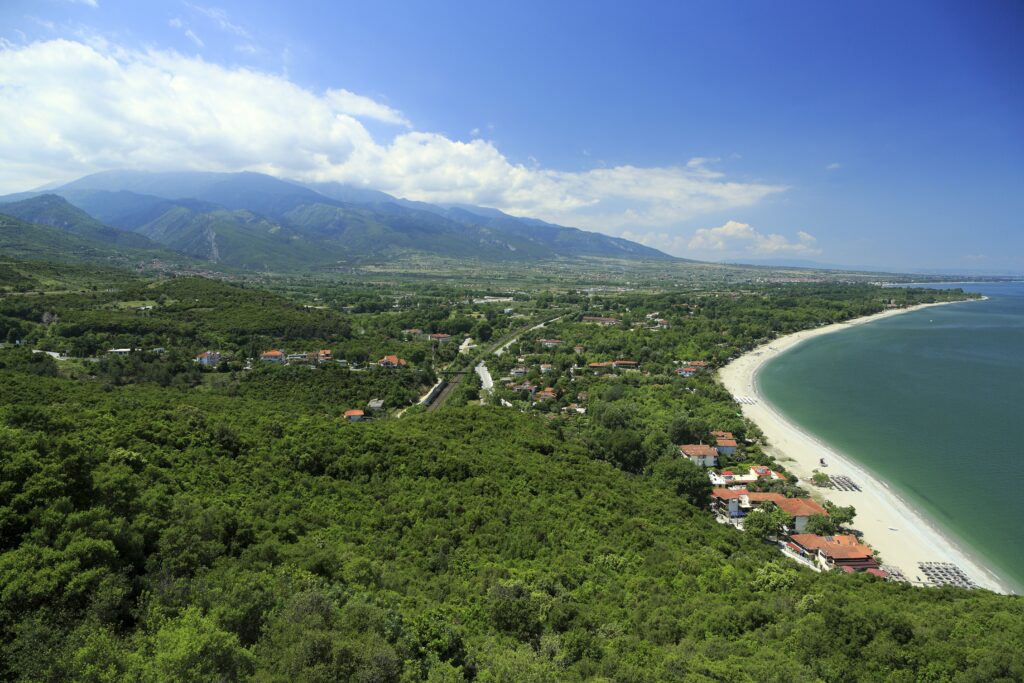
The best time to climb Mount Olympus is from June to September when the weather is most stable. During these months, the trails are usually free of snow, and the temperatures are more favorable for hiking.
Safety Tips
- Weather: Always check the weather forecast before your climb. Conditions can change rapidly on the mountain.
- Acclimatization: Spend a night at one of the refuges to acclimatize to the altitude.
- Guides: Consider hiring a local guide if you are unfamiliar with the terrain or if you plan to take a more technical route, including summeting Mytikas.
Flora and Fauna
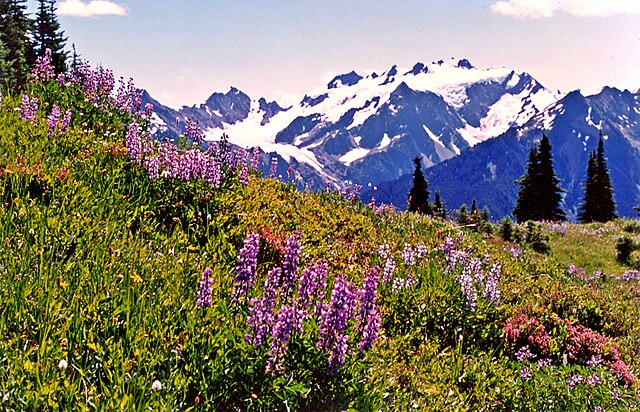
Mount Olympus is home to a rich variety of flora and fauna. You may encounter wild goats, deer, and a variety of bird species. The lower slopes are covered in dense forests, while the higher altitudes feature alpine meadows and rocky outcrops.
Mythological Significance
According to Greek mythology, Mount Olympus was the abode of the gods, with Zeus reigning supreme. The mountain’s peaks were believed to be the palaces of the gods, and many ancient myths and legends are associated with this majestic mountain. Climbing Mount Olympus is a journey through history, mythology, and nature. Whether you are an experienced climber or a passionate hiker, the mountain offers a unique and unforgettable experience. Prepare well, respect the environment, and enjoy the adventure of reaching the home of the gods

